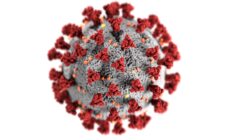Tuberculosis (TB) is an infectious disease most probably seen in the lungs. It is a bacterial infection caused by a bacterium called mycobacterium tuberculosis. It also spread and affects other parts of the body.
TB is most prevalent in the overpopulated area as it is easily spread from man to man through air droplets. Once the bacterium enters the body it infects the lung tissues and from there it spread via the blood stream to other parts of the body.
Awareness of TB is needed to be created in every area to prevent the spread of TB.
Latent TB disease:
It is the inactive form of bacteria in the body which can later become active when the immune system weakens. Bacteria are arrested from progression by the immune system of the body by forming a nodule and keeping it in inactive form for even life long period.
Latent TB infected person shows no symptoms and doesn`t spread the infection until the bacteria is inactive. Untreated latent TB can develop into an active TB, if the immune system weakens.
Active TB disease:
In this active TB disease the bacteria is fully active. When the bacteria are in active form it enters it starts affecting the lung tissues and from there it enters the blood stream to spread to other parts of the body.
The active form of bacteria start infecting before the immune system could fight against it. This shows some visible symptoms.
Types of TB:
According to the area affected, it presents some types as follows.
Pulmonary tuberculosis – this is the usual TB seen in the lungs most commonly seen TB among all other types. From this TB other types has chance to prevail or spread. TB of meningitis – in this type the infection is seen in the coverings of the brain, occurring by the spread of infection from other areas. TB of bones – the TB infection affecting the bone marrows and the bone parts and joint areas, mostly the hip and knees are involved. TB of lymph glands – TB easily spreads to the lymph glands and swellings are seen abruptly, especially in the neck region and few in the abdomen region. Genitourinary TB – this is the TB infection of the genital region, most probably affecting the women as the pelvic inflammation. TB Skin – some TB infection is seen affecting the skin directly.
Signs and symptoms:
The symptoms of TB is not seen in few cases and visibly seen in other cases in the developed stage of the disease as follows.
- Chronic cough – continued cough reflex for about 3 weeks or more. In few cases blood is seen in the sputum coughed.
- Chest discomfort – pain is felt in the chest region.
- Lack of energy to do activities.
- Weight loss – unknown weight loss occurs.
- Loss of appetite – lost desire to eat food.
- Excessive sweating – especially in the night time.
- PLEURITIS – inflammation of the pleura surrounding the lungs.
- Fever – seen suddenly with some frequency.
Few symptoms vary according to the area affected.
TB diagnosis:
Tuberculosis Skin test: This test decides the response of the immune system for the presence of TB bacteria in the body. The skin test reveals only the detection of infection of TB in the body. Chest x-ray: It is useful to detect lung defects if present. It can be useful only for TB in the lungs and not for other types of TB. CT SCAN and MRI SCAN: These scans are useful in showing the imaging resonance of the TB infected area in the body especially in the brain and spinal regions. Sputum smear test: The sputum is collected and with the help of the smear (sample placed in the glass) and staining it, examination is done under microscope to detect the presence of TB bacteria. This is done by the testing the sputum of the lungs and detecting TB infection. But this method takes several weeks to get result. Culture test: This method is done by reading the growing of bacteria in a medium and detecting the TB infection. Polymerase chain reaction: This method involves the magnifying of DNA genetic material and checking for the TB bacteria presence. Blood test: By testing the blood the TB infection can be detected by the presence of antibodies against the infection.
Treatment for TB:
TB can be cured easily with the help of advancement and drugs available in todays world. Various antibiotics are available for TB infection. Though TB cure is easier, it take longer time. The medication continues for longer time and various combinations of drugs are followed in the treatment process. Main antibiotics are
- ISONIAZID
- RIFAMPICIN
- PYRAZINAMIDE
- ETHAMBUTOL
Preventing TB spread:
- Avoid living in the same room for so long with the active TB infected person.
- Avoid living in the congested room and poorly ventilated room.
- Take necessary precautions (like wearing a mask) in the air polluted environment.
- Using BCG vaccinations for the infants.
- Proper medication should be followed by the active TB infected person according to the doctor’s prescription.
Prevention of TB is mainly done by detecting the Bacteria by tests and following the appropriate treatment plan to control the advancement of bacteria. In the protection of general mass population, vaccination is done for the mass population.
Conclusion:
TB infection is one of the leading infectious diseases in causing death. It accounts for prevalence in the one third of the population all over the world. Various researches are under progress to develop a new type of TB vaccine. Awareness is needed for preventing the spread of TB infection across the world.





